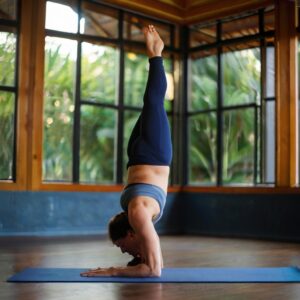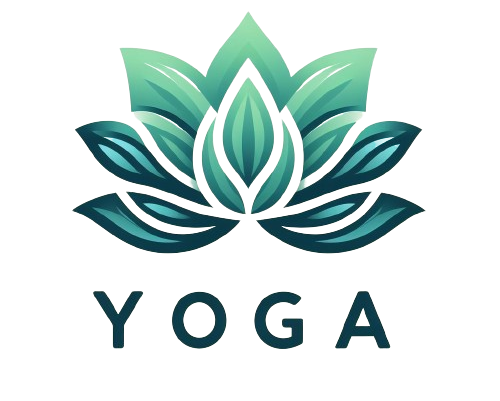Hey there! So, you’re interested in getting that bendy, flexible body and wondering how yoga fits into the picture? Cool, you’re in the right place. Yoga isn’t just about striking a pose for Instagram or getting some peaceful mind vibes (although those are awesome perks). It’s a fantastic way to improve your flexibility, and guess what? You don’t have to be naturally bendy to get started.
The Magic of Stretching
The notion that you need to already be supple to start yoga is a common misconception that bars many from embarking on this enriching journey. Think of yoga as a personal path rather than a competition. It’s designed to enhance your body’s capabilities gradually, respecting your current limits while gently pushing them further. Every pose has variations and modifications to accommodate different levels of flexibility and strength, ensuring that you can participate fully from day one. This inclusivity is what makes yoga so special; it’s about continuous improvement and self-exploration. The beautiful part is, as you progress your flexibility improves,and perception of your body’s abilities changes too. You start to appreciate the incremental progress and understand that flexibility comes in many forms—not just physical, but mental and emotional too. Yoga teaches patience and perseverance, showing us that with regular practice, those seemingly impossible poses become achievable, reflecting the limitless potential within us all.
Getting Started
Ready to dive in? Here are some advice to get you bending without breaking:
- Start Slow: start with simple poses and gradually increase the difficulty as you feel more comfortable.
- Consistency is Key: a little bit of yoga often is better than a lot every once in a while. Try to set a routine, even if it’s just 10 minutes a day.
- Listen to Your Body: pain is not part of the yoga equation. Feeling a stretch? Great. Feeling like your leg is about to snap? Not so great. Back off and try a less intense version of the pose.
- Breathe: it sounds obvious, but deep, consistent breathing helps your body relax into stretches. It’s like magic for your muscles.
Basic Poses to Boost Flexibility

The Forward Bend, or Uttanasana, stands as a testament to the transformative power of yoga in enhancing flexibility, particularly in the hamstrings, as well as the back and legs. This posture, characterized by a deep fold at the hips to bring the upper body down to the legs, is more than just a physical stretch; it’s an invitation to release mental and emotional stress that we often carry in our physical frames. In performing Uttanasana, the focus should not be on the act of touching the ground but on the journey through the stretch. It allows for a lengthening of the back side of the body, from the heels all the way through the calves, hamstrings, and up over the back, culminating at the neck and head. As you fold forward, there’s an inward turn that offers a moment of introspection and calm, nurturing physical flexibility and a flexible mind that is open to inner reflection. This pose encourages a letting go, a surrender that is both physical in releasing tension in the muscles, and emotional, in easing the clutters of the mind.
The dynamic duo of Cat-Cow Stretch, encompassing Marjaryasana (Cat Pose) and Bitilasana (Cow Pose), creates a rhythmical flow that invigorates the spine with newfound flexibility and vitality. This sequence of poses, performed on all fours, mirrors the reciprocal movement of the spine, with the inhalation lifting the head and tailbone to the sky in Cow, and the exhalation rounding the spine up to the ceiling in Cat. This gentle oscillation enhances spinal mobility, nurtures a supple back, and fosters awareness in the spine’s natural curves. By engaging in this flowing interchange, you lubricate the vertebrae and strengthen the spinal muscles and enhance blood circulation along the spine. The Cat-Cow Stretch transcends physical movement, embodying a meditation in motion that harmonizes the body and breath, leading to a serene and centered state of mind.
Downward-Facing Dog, or Adho Mukha Svanasana, is indeed a classic pose that stands out for its whole-body benefits. This asana stretches and strengthens with remarkable efficiency, targeting the hamstrings, shoulders, and arms, while also engaging the entire body. As one presses their hands and feet into the mat, lifting the hips up and back, the body forms an inverted V shape. This powerful posture works to decompress the spine, offering relief from stiffness and promoting spinal health. Downward-Facing Dog also improves circulation, as the heart is elevated above the head, encouraging blood flow. The pose serves as an important point in many yoga sequences, acting as a transition, a resting spot, or a focal point for breath work. Its multifaceted benefits make it for fostering mental resilience and a deeper internal connection. Engaging in Downward-Facing Dog can become a sanctuary of strength and tranquility, highlighting the interconnectedness of physical wellbeing and mental clarity.
Beyond the Mat
Beyond the confines of the yoga mat, the journey to enhanced flexibility weaves into the very fabric of our daily lives, underscored by the trinity of hydration, nutrition, and rest. Hydration is an important element in the quest for flexibility. Proper hydration ensures that our muscles maintain their elasticity, a key component in achieving a deeper stretch. It’s like a lubricant for the body’s tissues, facilitating smoother movements and reducing the risk of injury. Transitioning from hydration to nutrition, the foods we consume lay the groundwork for our body’s health and functionality. A balanced diet, rich in essential nutrients, acts as foundational support, fueling our bodies and aiding in muscle recovery and flexibility enhancements. It provides the building blocks required for physical activity and the restoration that follows. The significance of rest in this holistic approach cannot be overstated. It is during these moments of stillness and repose that our bodies embark on the subtle yet profound process of healing and growth. Muscle development and improvements in flexibility often occur not while in the midst of a challenging pose but in the quiet after, as our bodies recover and adapt to the demands we’ve placed on them. This orchestration of restorative practices—hydration, nutrition, and rest—comprises the cornerstone of advancing one’s yoga journey, iterating the fact that the path to improved flexibility transcends the practice of yoga itself, interlacing through our choices and habits off the mat.
